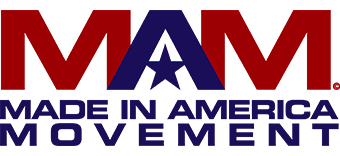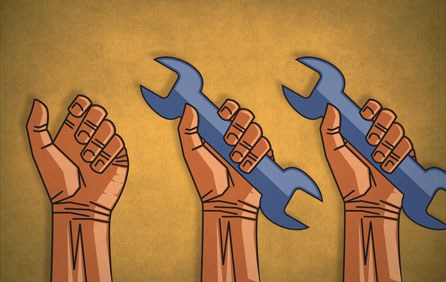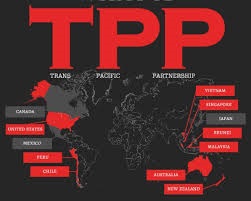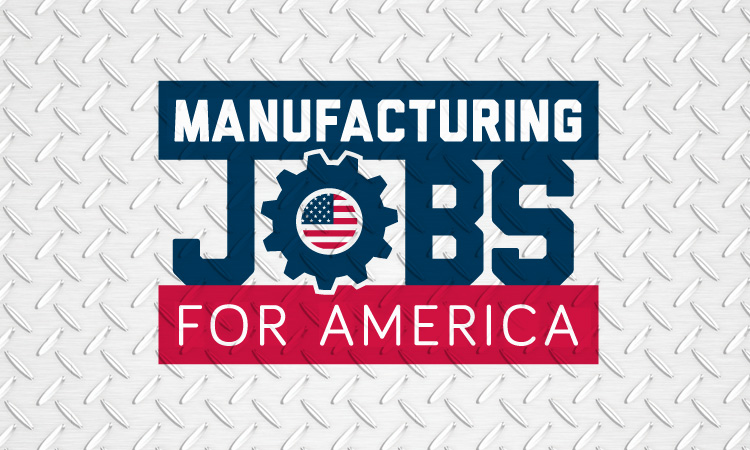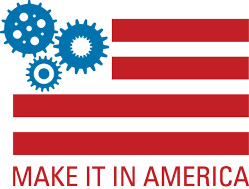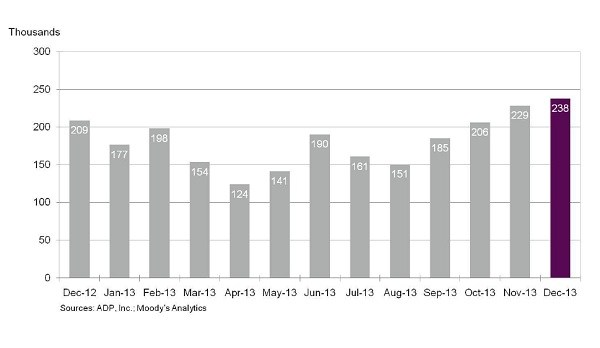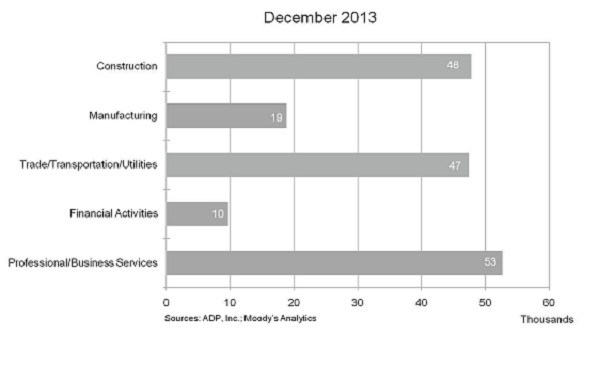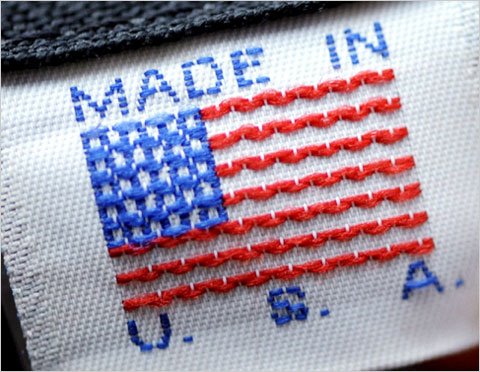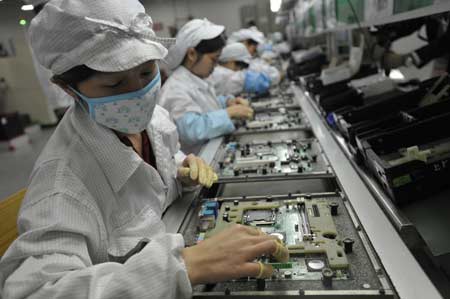The study is the first to quantify how much pollution reaching the American West Coast is from the production in China of cellphones, televisions and other consumer items imported here and elsewhere.
“We’ve outsourced our manufacturing and much of our pollution, but some of it is blowing back across the Pacific to haunt us,” said UC Irvine Earth system scientist Steve Davis, a co-author. “Given the complaints about how Chinese pollution is corrupting other countries’ air, this paper shows that there may be plenty of blame to go around.”
Los Angeles, for instance, experiences at least one extra day a year of smog that exceeds federal ozone limits because of nitrogen oxides and carbon monoxide emitted by Chinese factories making goods for export, the analysis found. On other days, as much as a quarter of the sulfate pollution on the U.S. West Coast is tied to Chinese exports. All the contaminants tracked in the study are key ingredients in unhealthy smog and soot.
China is not responsible for the lion’s share of pollution in the U.S. Cars, trucks and refineries pump out far more. But powerful global winds known as “westerlies” can push airborne chemicals across the ocean in days, particularly during the spring, causing dangerous spikes in contaminants. Dust, ozone and carbon can accumulate in valleys and basins in California and other Western states.
Black carbon is a particular problem: Rain doesn’t easily wash it out of the atmosphere, so it persists across long distances. Like other air pollutants, it’s been linked to a litany of health problems, from increased asthma to cancer, emphysema, and heart and lung disease.
The study authors suggest the findings could be used to more effectively negotiate clean-air treaties. China’s huge ramp-up of industrial activity in recent years, combined with poor pollution controls, has unleashed often fierce international debates.
“When you buy a product at Wal-Mart,” noted Davis, an assistant professor, “it has to be manufactured somewhere. The product doesn’t contain the pollution, but creating it caused the pollution.”
He and his fellow researchers conclude: “International cooperation to reduce transboundary transport of air pollution must confront the question of who is responsible for emissions in one country during production of goods to support consumption in another.”
###
Jintai Lin of Beijing’s Peking University is the paper’s lead author. Others are Da Pan, also of Peking University; Qiang Zhang, Kebin He and Can Wang of Beijing’s Tsinghua University; David Streets of Argonne National Laboratory; Donald Wuebbles of the University of Illinois at Urbana-Champaign; and Dabo Guan of the University of Leeds in England.
About the University of California, Irvine: Located in coastal Orange County, near a thriving employment hub in one of the nation’s safest cities, UC Irvine was founded in 1965. One of only 62 members of the Association of American Universities, it’s ranked first among U.S. universities under 50 years old by the London-based Times Higher Education. The campus has produced three Nobel laureates and is known for its academic achievement, premier research, innovation and anteater mascot. Led by Chancellor Michael Drake since 2005, UC Irvine has more than 28,000 students and offers 192 degree programs. It’s Orange County’s second-largest employer, contributing $4.3 billion annually to the local economy.
Compared to service businesses, manufacturers are nearly 10 times stronger exporters; their employees contribute twice as much to national productivity as workers in other sectors; and each job inside a manufacturing facility can spur the creation of an additional three to five jobs outside it.
In countries around the world, manufacturing’s multiplier effect has gone to work – creating jobs, boosting productivity, fueling innovation, and balancing economies. In the United States, for example, manufacturing made the largest contribution to GDP growth of any sector in 2012 and has expanded for each of the past seven months. That is how the manufacturing renaissance is driving recovery today – and helping businesses and nations prosper for many tomorrows to come.
Advanced manufacturing is replacing smoke stacks and shuttered factories with high-tech laboratories and state-of-the-art plants. These new, 21st-century models for prototyping and innovating enable the manufacturing industry to generate up to 90 percent of business R&D spending.
Generations ago, companies like Dow created and marketed new products entirely on their own. Products like Saran Wrap and Ziploc Bags went from the lab bench to the factory floor entirely within our company. Today, the breakthroughs we seek – game-changing ideas like self-healing materials and self-driving cars – are so complex that they will never materialize if we all stay within the boundaries of our sectors or our companies.
Innovation does not – and cannot – happen in silos anymore. The best products and industries of tomorrow will be born at what I call “the intersections.”
That is why, more and more, we need to work to form partnerships to unlock progress. We need collaboration among the brightest minds in business, science, and engineering. In the same spirit, we need active collaboration between the public and private sectors as well.
For businesses to succeed – for economies to grow – governments must create the conditions for innovation ecosystems to develop and flourish. This requires renewed focus in three key areas.
First, human capital. Machines may do the heavy lifting on factory floors, but it is human beings – specifically, scientists, engineers, and other highly skilled professionals – who turn advanced manufacturing clusters into centers of innovation. Governments must do more to educate young people, whether in universities or through skills training at community colleges, and to retrain experienced workers – particularly in science, technology, engineering, and mathematics.
Second, the business climate. In countries like the United States, a complex environment of regulations and tax provisions determines if and where companies scale up and invest. Too often, these regulations add costs and, worse, uncertainty to these calculations.Forward-thinking countries are seeding the ground for manufacturing growth by shifting to smarter regulation. Through competitive tax rates, streamlined permitting processes and other reforms, these countries enable government to operate at the speed of business, increasing predictability for companies that are looking to invest.
Third, a smart, balanced energy policy. Manufacturers gravitate toward regions where energy is affordable and accessible – not merely because we consume energy, but also because we create so much more with it. We use natural gas, for example,as a feedstock – as the building block that transforms our innovations from ideas into reality.
More than 95 percent of the world’s synthetic materials would not be possible without our industry: from pharmaceuticals to smartphones to lighter, more efficient vehicles. When natural gas is used in the manufacturing process instead of burned or exported, it generates eight times more value across the economy.
In this way, advanced manufacturing expands economies when they are healthy and helps them recover when they are not. It creates competitiveness in a way no other sector can – encouraging countries to invest in their work forces, laying the groundwork for further innovation, and making far better use of natural resources.
But again, this virtuous cycle cannot set itself in motion. If we create an ecosystem in which innovators can work together – at the intersections between business, government, academia, and civil society – then the current manufacturing renaissance can become a revolution. Far from the so-called demise of manufacturing, we will instead see the rise of a new era of investment, innovation, job creation, and prosperity that will improve lives around the world.
Andrew Liveris is Chairman and CEO of Dow.
Original article can be read here: http://www.cnbc.com/id/101349128
WASHINGTON — President Barack Obama’s international trade agenda is dead in the water if he doesn’t do a better job engaging with Democrats in Congress, and his administration appears to be getting that message, Democrats said Friday.
“We want transparency. We want to see what’s going on there,” House Minority Leader Nancy Pelosi (D-Calif.) told reporters. “We have a problem with that.”
As a result, many Democrats fear the actual terms of the deal do not reflect traditional Democratic Party policy priorities.
“This is a big problem now,” said Rep. Chris Van Hollen (D-Md.), the top Democrat on the House Budget Committee. “There is inadequate engagement on the substance of what will be in an agreement or out of an agreement.”
Democrats in the House and Senate have complained for years about the secrecy standards the Obama administration has applied to the TPP, forcing members to jump over hurdles to see negotiation texts, and blocking staffer involvement. In 2012, Sen. Ron Wyden (D-Ore.) complained that corporate lobbyists were given easy access while his office was being stymied, and even introduced protest legislation requiring more congressional input.
The issue came to a head Thursday in two ways. In one case, Obama’s new nominee for China ambassador, Sen. Max Baucus (D-Mont.), angered his party by introducing fast-track trade legislation backed by the White House. The bill would ease the passage of the TPP and is co-sponsored by Sen. Orrin Hatch (R-Utah) and House Ways and Means Committee Chairman Dave Camp (R-Mich.). But most Democrats oppose the bill, and ultimately, Baucus and the administration introduced the legislation without a House Democratic co-sponsor — a public embarrassment that prompted House Speaker John Boehner (R-Ohio) to declare Obama needs to get his act together on trade policy.
Also Thursday, U.S. Trade Representative Michael Froman met with Democratic members of the Ways and Means Committee, and got an earful, lawmakers told HuffPost.
“We had a very frank discussion,” said Rep. Sander Levin of Michigan, the top Democrat on the committee.
“They’ve said that they welcome congressional input,” said Van Hollen, who also attended the meeting. “But in terms of actually establishing the mechanisms, they haven’t put forward a proposal. But we should be putting those proposals on the table. Any administration is going to try and maintain maximum flexibility. It’s up to the Congress to insist that we have an important role in the process.”
Democrats are especially determined to win a role in negotiations because the bill introduced by Baucus, the departing chairman of the Senate Finance Committee, would grant the administration the ability to present Congress with trade deals that could not be amended, leaving lawmakers to take it or leave it, including on the TPP, which is opposed by many progressive groups and some tea party activists.
With opposition from the right, the administration needs to shore up support from Democrats to move the trade agenda ahead. And the Baucus bill didn’t help. Even Democrats like Oregon Rep. Earl Blumenauer, who are more open to free-trade deals with the right protections, think Baucus’ effort does little to improve the last fast-track bill Congress passed in 2002.
“I think it’s a mistake. I think it’s going to make it very hard to pass, and frankly, I don’t think it should,” said Blumenauer. “I’m a little disappointed that something’s dropped [introduced] that was never discussed with Democrats in the House. As I understand it, it wasn’t actually discussed with Democrats in the Senate.”
“It’s interesting Baucus introduced his bill without any — I think a couple senators endorsed it — but without any other Democratic senator on it,” Levin said.
“And most of them hadn’t seen his bill when he introduced it, including the new chairman,” he said, referring to Wyden, who is replacing Baucus at the head of the Finance Committee.
There’s a lot at stake for Democrats and the president in working out their rough spots. If they don’t, Obama’s trade agenda stalls. And for Democrats, giving the White House too much authority could undercut the centerpiece of the 2014 election argument — that they are the party that will deal with income inequality and help the middle class. That’s because many in their own party, especially grassroots activists and unions, blame flaws in previous grand trade deals like the North American Free Trade Agreement for siphoning off middle class jobs.
“We have had a trade deficit that has exceeded $350 billion every single year for the past 13 years. We have this enormous staggering problem with our economy called the continuing trade deficit, and this is a measure that would make that worse,” Rep. Alan Grayson (D-Fla.) said. “The classic example of this is NAFTA. NAFTA has managed to hurt American workers and Mexican workers at the same time.”
And most Democrats don’t think the pending TPP deal addresses numerous labor, environmental and other issues adequately. Like NAFTA, the TPP would empower foreign corporations to directly challenge the laws and regulations of a country before an international tribunal. Under other trade frameworks, like the World Trade Organization treaties, only nations themselves are permitted to bring trade cases before an international arbiter, meaning companies must first win support from a government before attacking a law. Exxon Mobil, Dow Chemical, Eli Lilly and other corporations have used NAFTA to attempt to overturn Canadian regulations regarding offshore oil drilling, fracking, pesticides, drug patents and other issues.
Progressives like Grayson have long been critical of free trade deals because of their empowerment of corporations. But even members of the House Democratic leadership who have traditionally supported such pacts are upset over the current deal and worried about its impact on their 2014 message.
“No one should believe that negotiations on TPP are over, because almost — again — all the key issues remain,” said Levin.
“Congress must have a robust role in the oversight of any trade deal,” said Rep. Steve Israel (D-N.Y.) chairman of the Democratic Congressional Campaign Committee. “I will continue working with my colleagues to ensure any trade deal reflects 21st century realities, protects the American worker and is only agreed to after adequate and necessary consultation with Congress.”
Still, boosting trade does fit into the Democrats’ agenda if it helps boost exports and create new jobs in America.
“We need to deal with trade. I don’t think there’s a member of Congress who isn’t pro-trade, but it’s got to be pro-American worker, pro-American consumer, pro-American business,” sai
d R
ep. Xavier Becerra (D-Calif.). “Otherwise, why are we opening up our markets to people if we’re going to get raped?”
Becerra and others acknowledge there is a great deal of pressure, in general, to take steps that promise economic growth with the economy still limping along and producing too few jobs. Crafting a trade deal that pleases their base, however, won’t come easily, and almost certainly not before the election, especially if the Obama administration offers Democrats little more than token input.
“This place doesn’t work on amorphous pressure. It works on touch-and-feel pressure. Unless we can come together on something that collectively, bipartisanly, we think can work, I think it’s going to be tough,” said Becerra. “It won’t be fast. It might be on a track, but it won’t be fast.”
Original article can be read here: http://www.huffingtonpost.com/2014/01/11/fast-track-trade-democrats_n_4580720.html
WASHINGTON — House Democrats balked Thursday at a bill designed to clear congressional hurdles for President Barack Obama’s controversial Trans-Pacific Partnership trade pact. By refusing to put forward a co-sponsor for the legislation, House Democrats have significantly hampered the prospects for the bill’s passage.
The pending trade deal is supported by corporate interest groups, including the U.S. Chamber of Commerce, while organized labor and traditionally liberal public interest groups have consistently voiced concerns over the TPP’s potential to undermine important environmental, public health and labor standards.
Late last year, 151 House Democrats signed a letter opposing the so-called fast track scheme, also known as trade promotion authority. Several House Republicans oppose fast track on the grounds that it excessively empowers the executive branch, but many others, including Speaker John Boehner (R-Ohio), support the proposal.
“Obama wants to pass it; Democrats in the House want to oppose it,” said one House Democratic aide, who was granted anonymity due to the sensitivity of the Democratic position. “Republicans are split ideologically, and want to know why they should take one for Obama.”
Nevertheless, Boehner said at a Thursday press conference that he cannot pass the bill without Democratic help.
“I’ve made clear to the president that this can’t pass unless there is bipartisan support for it,” Boehner said. “And this goes back months, and yet we’ve seen scant attention to this issue by the administration in terms of encouraging Democrat leaders and Democrat members to stand up and vote for it.”
The Obama administration did attempt to drum up Democratic support, according to sources familiar with the effort, particularly with an aggressive effort to win over Rep. Ron Kind (D-Wis.). Kind is co-chair of the New Democrat Coalition, a group traditionally sympathetic to corporate interests, but he also is frequently mentioned as a potential gubernatorial or senatorial candidate in his home state of Wisconsin, where labor unions wield significant political clout. Neither Kind nor any other House Democrat agreed to co-sponsor the fast track bill, which was introduced by Sens. Max Baucus (D-Mont.) and Orrin Hatch (R-Utah) in the Senate.
Kind’s office said that there had been discussions with the administration, but no formal request that he sponsor the bill.
The New Democrat Coalition, meanwhile, issued a statement, endorsed by Kind, on the fast track legislation, saying, “We are encouraged by the introduction of a bipartisan, bicameral bill to spur action on Trade Promotion Authority. We look forward to working with our colleagues in considering this bill … Trade Promotion Authority will help the Administration conclude important agreements that will open markets and create jobs.”
Many House Democrats are flatly opposed to the TPP and efforts to ease its passage. House Democrats are often more responsive to liberal interest groups than their Senate counterparts, and many members — including some in the Democratic Party leadership — believe that opposing TPP is good for electoral politics in 2014. While supporters of the deal argue it will increase economic growth, similar recent trade deals have undercut some U.S. industries and weakened global labor protections.
“The president has failed to find someone who is willing to introduce the bill. He’s got over 200 members to cultivate from, some of whom would like to have his support in the next election. But Democratic members are extremely skeptical of this,” Rep. Alan Grayson (D-Fla.) told HuffPost.
“We’ve tried free trade, and not only has free trade not improved the U.S. economy, it’s gutted manufacturing and driven down our labor standards,” he added, citing NAFTA as a prime example.
“We expect to have a robust conversation on the Hill about how trade agreements should be negotiated and the role of Congress in that process,” U.S. Trade Representative Michael Froman told HuffPost. “We’re eager to engage directly with members of the Finance and Ways and Means Committees and with all of Congress to pass Trade Promotion Authority legislation that has broad, bipartisan support.”
The precise terms of the deal remain secret from the public, and the dozen countries involved in the talks have yet to reach a formal agreement. The Obama administration has categorized the negotiation text as a classified document. Congressional staffers have complained about being denied access to the U.S. position.
This fall, WikiLeaks unveiled a draft of the deal’s intellectual property chapter, prompting outcries from global health experts and Internet freedom groups, which warned that the language on patents, copyrights and other intellectual property could increase the cost of medicine and curb free speech on the web.
Progressive groups came out strongly against the trade promotion authority, suggesting that approving it and the underlying trade deal would undercut efforts to curtail income inequality.
“The Trans-Pacific Partnership would be an unmitigated disaster for everything from the environment to Internet freedom and working families,” said Charles Chamberlain, the executive director of Democracy For America, a grassroots progressive organization, which intends to make trade an election-year issue.
“Members of Congress must be able to work to ensure that any proposed trade agreement is a fair deal for all Americans, not just the rich and powerful,” Chamberlain added in a statement. “Let’s be clear: A vote for fast track authority on the TPP is a vote for a deal that will hurt hardworking Americans and haunt every single member of Congress, Republican or Democrat, who votes for it.”
This article has been updated with a statement from the New Democrat Coalition.
Original article can be read here: http://www.huffingtonpost.com/2014/01/09/trans-pacific-partnership-obama-boehner_n_4570837.html
- Strengthening America’s 21st century workforce
- Opening markets abroad
- Creating the conditions necessary for growth
- Expanding access to capital
In a statement, Senator Coons said: “Washington needs to refocus on manufacturing jobs, which pay better and contribute more to our economy than new jobs in other sectors. This campaign is designed to help manufacturing-jobs legislation that can make a real difference in our communities earn the bipartisan support needed to become law. There are too many Americans still looking for work for Congress to continue to waste time lurching from crisis to crisis. Manufacturing can power our economic recovery, but Congress needs to do its part to see that potential realized.”
When it comes to Congressional initiatives, this one seems fairly strong. It has support from some of the biggest industry organizations, including the National Association of Manufacturers, the National Tool & Machining Association, the National Skills Council and the Association for Manufacturing Technology. Big industrial players are also showing their support — Dow, DuPont, Ford, General Electric and others are mentioned on the initiative’s site. Even unions are onboard, with the AFL-CIO, United Autoworkers and United Steelworkers showing support.
With all these important organizations, companies and unions involved, this initiative should be able to implement its suggested chances fairly easily, one would assume. But amid a time marked by congressional derision, it seems difficult — if not impossible — to pull off all the legislative changes listed on the initiative’s site.
Manufacturing jobs through legislation
Of those legislative proposals, some are more far-reaching than others. Let’s break them down a bit according to the four principles outlined by the initiative. For the time being, we’re going to focus solely on the bills that have been introduced into Congress, which represents only a portion of what the initiative aims to implement.
Workforce/skills training
These bills are meant to strengthen the American workforce, or make it easier for people to attend the kinds of schools that offer the kind of education they’ll need in future markets. The aim is that by encouraging more people to get technical- or engineering-based educations, they’ll be well-suited to work in the kind of high-tech manufacturing that every politician wants located in their district.
The Adult Education and Economic Growth Act (S. 1400), which is still in the committee stage, aims to make more investments in adult education, require better coordination between state workforce development agencies and educational facilities and make more money available to teach new Americans more English skills. The America Works Act (S. 453) aims to reduce the “skills gap” by giving more priority to programs that offer portable, industry-recognized credentials, particularly in skills that have relevance to the local job market.
Sen. Al Franken’s Community College to Career Fund (S. 1269) would amend the Workforce Development Act of 1998 to establish an $8 billion fund that would offer grants to a variety of institutions based on the need to better facilitate the transition from educational training to a new career in the workforce.
The BUILD Career and Technical Education Act of 2013 (S. 1293) proposes two-year grants for local educational agencies to improve education and career programs focused on middle and high school students, while the Women and Minorities in STEM Booster Act of 2013 (S. 288) aims to establish a National Science Foundation grant program to promote women and minorities pursuing jobs in STEM-based industries.
Exports
The initiative wants to make exporting products to other countries fairer and more economically viable, which means easing regulatory restrictions and combating currency manipulation. The Currency Exchange Rate Oversight Reform Act (S. 1114) aims to do exactly that, by directing the Secretary of the Treasury to analyze market developments on a biannual basis, review the monetary policies of major trading parties and then report on countries that are “misaligned.” This would also allow the Secretary to combat these manipulations via numerous means.
This is one of the bills that seems most likely to actually work its way through Congress — no one likes a currency manipulator, and the groundwork, in terms of keeping the industry apprised of who is doing the manipulation, has already been laid. This bill is also one of the few within the initiative’s realm that has bipartisan support via five Republican and two Independent co-sponsors, along with the 11 democrats.
The Small Business Export Growth Act (S. 1179) aims to improve the coordination between export promotion programs — in theory, this would help smaller businesses more easily find ways to bring their products to a global marketplace. In addition, it would create a new interagency task force focused on small business export financing.
Access to capital
Many manufacturers know all-too-well the difficulty in securing financing for equipment investments or expansions, particularly in the years right after the Great Recession. A major component of Coons’ initiative is to introduce legislation that will not only make financing easier to acquire, but also give more options to companies who “insource” or “re-shore” assets to the U.S.
The Manufacturing Reinvestment Account Act (S. 1651) would help manufacturers establish a manufacturing reinvestment account (MRA) in a community bank — up to $500,000 pre-tax dollars a year. These funds would be effectively taxed at a low 15 percent rate and would be used to purchase equipment or for job training.
One that might be appealing to energy-conscious manufacturers is the Job Creation through Energy Efficient Manufacturing Act (S. 1501), which would authorize $250 million in funding to a Financing Energy Efficient Manufacturing Program at the U.S. Department of Energy. Manufacturers interested in new or expanded industrial energy efficiency programs could receive financing via low-cost loans to help cover the up-front costs of these projects.
A bill with a higher share of bipartisan support is the Startup Innovation Credit Act (S. 193), which would allow new manufacturers claim their R&D tax credit against their employment taxes, which creates the cash flow necessary to grow. Right now, these young companies are shut out of
th
e credits, even though they create the most jobs. This bill has been referred to the Senate Finance Committee, but given the overall support for startups in recent years due to Silicon Valley, for one, it seems like a good bet for eventual passage.
Enabling growth
Many agree that adopting a singular manufacturing policy, at the federal level, is a useful place to begin notable change in the way its lawmakers make the environment more suited to growth. The Rebuild American Manufacturing Act (S. 544) would force the President to establish a national manufacturing strategy every two years and submit it to Congress.
And while that might be a good start, the initiative has some other ideas as well, and this is the section where some of the most forward-thinking proposals have ended up. The American Jobs Matter Act (S. 1246) would require the Department of Defense to measure domestic employment as factor in rewarding a defense contract. This would, in theory, allow American manufacturers to leverage in bids their commitment to the U.S. economy by showcasing the jobs they’ve already created, along with the jobs to be created if the contract is won. The Senate Armed Services Committee is currently looking at this bill.
Finally, the Made in America Manufacturing Act (S. 63) proposes a program that awards states and regions with funding to support local manufacturers via low-interest loans. These would be used to build new facilities or upgrade equipment. The states/regions could also use the money to assist small manufacturers, for example, in connecting with larger partners, or to establish educational programs that partner businesses with skills providers to prepare people for the types of manufacturing jobs found locally.
Initial thoughts
Many of these legislative changes appear to be steps in the right direction, but there’s a few matter of note. One is that above, we’ve only covered legislation that has actually been introduced — roughly have of the bills Coons’ initiative wants to pass are still being written, which means months, if not years, before they come to any critical votes, much less the President’s signature.
The lack of bipartisanship is troublesome as well. The initial announcement listed only Democratic members of Congress, and they have not added any Republicans or Independents to their ranks. A few of the bills have co-sponsors from the Republican party, and I’ve identified a few of those, but for the most part, there isn’t much bipartisanship in the initiative that is supposed to spur just that. And until the initiative can manage that, I don’t see much success here.
I also know many manufacturers would see some of these bills take a different focus. There is much talk in Congress about deploying new innovation centers, or multi-million dollar efforts to improve worker training, and those are great, but many companies simply want their tax burdens decreased, or various bits of red tape efficiently cut from how they deal with the government. In many cases, these kinds of changes would be more immediately beneficial to manufacturers, and would allow them to expand and hire new people. Many would argue that before we start working on bills that would better enable the workforce to take high-tech manufacturing jobs, we need to make sure those jobs exist and will stick around for the long-haul.
Onward
Our plan is to track this initiative as it progresses through 2014 — what ends up being picked for voting in Congress, what falters, what passes. We’ll also keep tabs on Sen. Coons’ initiative as a whole to see if they end up addressing some of the concerns mentioned above. Be sure to stay tuned to the Manufacturing Jobs for America Initiative page on Manufacturing.net as these developments come to light.
- Strengthening America’s 21st century workforce
- Opening markets abroad
- Creating the conditions necessary for growth
- Expanding access to capital
“Washington needs to refocus on manufacturing jobs, which pay better and contribute more to our economy than new jobs in other sectors,” Senator Coons said. “This campaign is designed to help manufacturing-jobs legislation that can make a real difference in our communities earn the bipartisan support needed to become law. There are too many Americans still looking for work for Congress to continue to waste time lurching from crisis to crisis. Manufacturing can power our economic recovery, but Congress needs to do its part to see that potential realized.”
“I applaud Senator Coons and his colleagues for their commitment to promoting manufacturing growth in America in an increasingly globalized, competitive and interconnected world economy,” Bloom EnergyFounder & CEO K.R. Sridhar said. “This renewed attention signals to American businesses that the United States is dedicated to competing for – and winning – cutting-edge manufacturing jobs of the 21st century.” Bloom Energy, a fuel cell technology company, recently celebrated the opening of its Newark, Delaware facility, which is slated to hire more than 100 new workers in the coming months.
The senators will work over the next few months to build support from Republicans and Democrats for these bills, and committee and subcommittee chairs have pledged to convene hearings on these issues.
Over time, added emphasis will be placed on bills that garner strong bipartisan support, and additional bills may be added to the effort.
The campaign’s focus on manufacturing reflects the sector’s reputation for providing high-quality jobs that lead to gains throughout the economy. Workers in manufacturing jobs earn 22 percent more in annual pay and benefits than the average worker in other industries, according to the National Association of Manufacturers. Every new manufacturing job created adds another 1.6 jobs to the local service economy, and for every dollar in manufacturing sales, another $1.34 is added to the economy. Investments in manufacturing have a stronger impact than investments in any other economic sector.
“The Manufacturing Jobs for America initiative that supports pro-growth, pro-jobs policies in energy, tax, regulatory and workforce policy and other areas has the potential to provide a critical path towards bipartisan agreement on issues facing manufacturers and their employees,” National Association of Manufacturers President Jay Timmons said. “The manufacturing sector is still struggling to recover from the 2.3 million jobs lost during the difficult recession of 2008 and 2009. While 500,000 jobs have since been created, we still have a long road to travel. A growth agenda, that includes some of the bills that are part of the Manufacturing Jobs for America effort, is key to creating an environment that encourages job creation.”
“The AFL-CIO applauds the Senate Democrats for pulling together this broad legislative package to support domestic manufacturing,” AFL-CIO President Richard Trumka said. “This is an example of the results-oriented approach Congress should be taking to invest in growth and create jobs, rather than engaging in divisive ideological campaigns. We strongly support many of the themes that run through these bills, including action on currency manipulation and evasion of import duties, measures to increase the reshoring of production, more resources for skills and training, improved access to capital, help for start-ups, and domestic content requirements for government purchases. We look forward to working with the Senate to enact much of this legislation. The manufacturing sector in the United States has finally begun to heal, but we must create the conditions for a long-term recovery. A comprehensive approach like this one can move us a long way in that direction.”
In addition to Senator Coons, senators contributing policy to the Manufacturing Jobs for America campaign include Senators Debbie Stabenow (D-Mich.), Sherrod Brown (D-Ohio), Tammy Baldwin (D-Wis.), Mark Begich (D-Alaska), Richard Blumenthal (D-Conn.), Dick Durbin (D-Ill.), Joe Donnelly (D-Ind.), Al Franken (D-Minn.), Kirsten Gillibrand (D-N.Y.), Kay Hagan (D-N.C.), Mary Landrieu (D-La.), Carl Levin (D-Mich.), Ed Markey (D-Mass.), Claire McCaskill (D-Mo.), Jeff Merkley (D-Ore.), Chris Murphy (D-Conn.), Mark Pryor (D-Ark.), Jack Reed (D-R.I.), Brian Schatz (D-Hawaii), Jeanne Shaheen (D-N.H.), and Mark Warner (D-Va.).
In addition to Bloom Energy, the National Association of Manufacturers, and AFL-CIO, Manufacturing Jobs for America has earned the support of the Alliance for American Manufacturing; American Automotive Policy Council; American Small Manufacturers Coalition; Association for Manufacturing Technology; BlueGreen Alliance; Dow; DuPont; Ford Motor Company; General Electric; the Information Technology & Innovation Foundation; National Association of Development Organizations; National Skills Coalition; One Voice – National Tooling & Machining Association, and Precision Metalforming Association; Progressive Policy Institute; STEM Education Coalition; Third Way; the United Autoworkers; and the United Steelworkers.
For a full list of the legislation included in Manufacturing Jobs for America, go to http://coons.senate.gov/manufacturing.
The construction industry experienced its best month since 2006, with 48,000 jobs added to the payrolls, up from the 18,000 added in November. The manufacturing industry also had a strong month, adding 19,000 jobs in December, up slightly from last month’s report of 18,000.
“Job growth meaningfully accelerated and is now over 200,000 per month. Job gains are broad-based across industries, most notably in construction and manufacturing,” said chief economist of Moody’s Analytics Mark Zandi in a press release.
Goods-producing employment increased by 69,000 jobs last month, an increase from the revised figure of 46,000 added in November. That brings the total goods-producing employment for 2013 to 286,000 jobs. ADP claims that nearly 75 percent of this increase is attributed to the construction industry as the housing recovery increased throughout the year.
Service-providing industries, a large category that likely includes architects and engineers in the professional and business services sector, rose by 170,000 jobs last month, down from the revised November figure of 182,000. Employment in this field increased by nearly 1.9 million jobs over the course of 2013.
Looking ahead to 2014, Zandi predicts that the average job growth for the next year will be about 225,000 jobs per month. “That’s a pretty good year by almost any standard,” he said in a conference call.
The U.S. Bureau of Labor Statistics employment report is scheduled for release on Friday morning, providing more detailed information about the economic state of the construction and architecture fields.
The Federal Trade Commission is charged with prosecuting manufacturers and distributors that make false or misleading claims that a product is of U.S. origin. Under FTC regulations, for a product to be labeled Made in the USA, it must be “all or virtually all” made in the United States. This standard applies both to express and implied Made in the USA claims, such as including images of the American flag, a map of the United States or references to the manufacturer’s U.S. locations on packaging or in advertisements.
Factors indicating that a product is “virtually all” American-made include (1) a negligible amount of foreign content, (2) foreign content is incorporated early in the manufacturing process and (3) final assembly or processing takes place in the United States. This is not a bright-line or quantitative test. Rather, the FTC, in determining which cases to pursue, takes into consideration on a case-by-case basis the nature of the product and consumer expectations.
Qualified and Unqualified Claims
In its Made in the USA policy, the FTC distinguishes between unqualified Made in the USA claims and qualified claims, such as “Made in USA of U.S. and imported parts” or “Assembled in the USA.” A qualified Made in the USA claim may be appropriate for products that include some U.S. content or processing, but must still be truthful.
The FTC offers the example of an exercise treadmill that, while assembled in the United States, consists primarily of foreign-made components including the motor, frame and electronic display. The FTC cautions that claiming that the treadmill is “Made in America of U.S. and Imported Parts” would be deceptive because the value of the American-made parts is negligible.
California’s Stringent Statute
While many states have false advertising laws, California expressly prohibits the designation of products as Made in the USA or Made in America when the product or “any article, unit, or part thereof, has been entirely or substantially made, manufactured, or produced outside of the United States.” By requiring that “any article, unit, or part” of a finished product be American made, the California law is more stringent than the FTC’s “all or virtually all” standard.
While violation of the statute is a misdemeanor offense, the real risk is a civil class action lawsuit that exposes the defendant to payment of the plaintiff’s attorneys’ fees and class-wide damages.
In one prominent example, the Kwikset Corporation was sued in California state court by a class of consumers that had purchased locksets labeled with “Made in USA” or similar wording that contained screws or pins made in Taiwan or involved latch subassembly performed in Mexico. Kwikset argued that the labels were appropriate because the locksets were “substantially made” in America. The California Court of Appeals disagreed, concluding that if a product consists of separate, identifiable components, the law required each part to be entirely or substantially made in the United States. “Screws and pins are distinct components clearly necessary to the proper use or operation of a lockset because without them one could not install or operate the product.”
Kwikset was enjoined from using any Made in the USA labeling and ordered to notify its California distributors and retailers that any remaining inventory could be returned for replacement or refund.
Avoid Misleading Labels
Companies should evaluate the origin of the components and content of their products and the manufacturing processes that they employ on a case-by-case basis to determine if an unqualified Made in the USA claim is appropriate. California’s Made in the USA statute creates further challenges for companies that assemble their products in America incorporating foreign-made components. If the proportion of the foreign-made components is negligible, the product could comply with FTC regulations but still run afoul of California law. A carefully crafted qualified Made in the USA label, however, could still permit the manufacturer to truthfully tout the American contribution to its products.
What does a manufacturer do when it’s struggling with excessive costs? One of the most common reactions in recent years has been to pack up and move to another country or continent where it can bring its costs of production down.
And this is just what’s happening to a number of factories, except these are Asian plants moving production to the United States. Turn Americas Job Prospects Around Through Reshoring.
Leading the Pack: Large Manufacturers Build New Facilities
The Wall Street Journal reports that Zhu Shanqing, chairman of Keer Group, is to spend $218 million in South Carolina to build a plant to spin yarn, adding 500 manufacturing jobs to the state’s economy. In another twist, China’s largest air conditioning manufacturer, Gree Electric Appliances, which manufacturers air conditioners sold in the US under a variety of different brands, is planning to build a plant in the US in 2014, although it wouldn’t say exactly where until the deal is sealed. And Hankook Tires, South Korea’s largest tiremaker, is planning to build a factory in Tennessee, to be in production by 2016, which will produce 11 million tires per year for the American market.
In a further strengthening of the trend, Chinese Lenovo Group, the world’s second largest manufacturer of personal computers, is planning to produce its ThinkPad laptop computers in North Carolina. Also, the world’s largest electronics contract manufacturer, Taiwan-based Foxconn Technology Group, which produces well-known brands under contract such as the BlackBerry, iPhone, Kindle and PlayStation, is to invest $30 million in a new robotics plant in Pennsylvania, with the possibility of a second plant in Arizona.
It’s Not Just Public Relations: the Myth of Cheap Asian Labor
Moves to reshore their manufacturing jobs have been driven in part by public pressure, for companies such as Apple, Hewlett-Packard and Walmart. However, the story isn’t only about labor costs. Walmart CEO Bill Simon told a recent manufacturing conference that in addition to rising Asian labor costs, oil and transportation costs are high and becoming increasingly uncertain. While in absolute terms Asian hourly wages are significantly less than the hourly wages of American manufacturing jobs, labor only represents about one tenth of total production costs, on average.
A series of reports from the Boston Consulting Group predicts that the US will reach cost parity with China by 2015 and that by the end of the decade as many as five million manufacturing jobs will be added. Chinese labor rates are rising 20% per year, according to the Manufacturer Alliance for Productivity and Innovation (MAPI), at the same time that the financial crisis has hit US wages.
How the American Trade Deficit Works in its Favor
The trade deficit that the United States has with China is having an unexpected result when it comes to exporting goods from the US to China. With transportation being one of the biggest expenses in overseas shipment, containers and cargo ships which leave for China empty after having arrived filled with Chinese-made goods allow American exporters to move their products to the Chinese market at a fraction of the cost of goods coming inbound. MAPI points out that American manufacturers actually have an advantage when it comes to shipping costs.
Transportation and Energy: a Key Reality
Shipping from China can be a major cost and headache which is set aside when manufacturing in America. Eliminating this factor from the supply chain can save both time and money. In a recent cost teardown, market researcher IHS found that Google is paying somewhat less overall to produce the Moto X smartphone in Texas, creating 2000 manufacturing jobs, than Samsung is paying to make its popular Galaxy S4 smartphone in Korea. Although the wages of manufacturing jobs are higher in Texas, they amount to only 5% of the total cost of the Moto X. With as little as four days lead time to deliver orders, Google is able to provide customized products to its customers while customers of its overseas competitors are waiting weeks for delivery.
Energy costs are falling rapidly in the US as shale gas is exploited, making the US a net exporter of energy, and oil finds are reducing or eliminating the need to import oil from shaky overseas suppliers. This translates into lower costs for electricity and transportation for American manufacturers, adding to the incentive to add manufacturing jobs here.
It’s Not Only About Costs: Quality, Proximity, Simplicity
China has long been seen as the place to manufacture to obtain a competitive advantage in terms of price. But as the price advantage is being eroded, manufacturers are becoming less tolerant of other problems that come with importing from the other side of the globe.
Quality has always been a problem. Rigid controls and inspections need to be conducted from a distance to ensure that products are produced with appropriate quality. A number of other problems have cropped up, such as worker exploitation, with quality of the production facility and methods coming into the public limelight.
Manufacturers are increasingly looking to eliminate these problems, with less of a cost incentive to work around them. When the manufacturing jobs are close at hand maintaining control over quality is relatively simple, in comparison to overseas production. Having production closer to the customers also has a significant effect in improved customer service. These factors can help boost sales, ultimately helping the bottom line.
These are a number of great reasons for bringing manufacturing jobs home.
Do you have more stories of reshoring manufacturing jobs?
Join the conversation and add your comments below.
Florida is a responsive WordPress theme suitable for multipurpose websites such as a business website or an agency website. It has a stylish minimal layout and comes equipped with custom post types to create portfolios, highlight content, showcase teams, etc
There are many things you will enjoy when you get this theme. It has a lot of shortcodes which can be used to organize and design your posts without the knowledge of PHP. Those shortcodes also enable you to create complex and beautiful layouts, while at the same time improving the functionality of your site
With this Florida theme, you get to design your own page with ease and convenience even if you do not have programming background in minutes. Let your readers take your stories with them wherever they go with its mobile adaptation capability and full responsive coverage
[one_half]
Penatibus et magnis dis parturient montes consectetuer adipiscing
Adipiscing elit commodo ligula eget dolor Morlem ipsum dolor sit amet nec, consectetuer adipiscing elit. Aenean commodo ligula eget dolor Cum sociis natoque penatibus et magnis dis parturient montes. Morlem ipsum dolor sit amet nec penatibus et magnis dis parturient montes
[/one_half]
[one_half]
Cum sociis natoque penatibus et magnis dis parturient montes. dolor sit amet nec, consectetuer adipiscing elit. Aenean commodo ligula eget dolor.
Morlem ipsum dolor sit amet nec, consectetuer adipiscing elit
[/one_half]
Morlem ipsum dolor sit amet nec, consectetuer adipiscing elit. Aenean commodo ligula eget dolor. Aenean massa. Cum sociis natoque penatibus et magnis dis parturient montes. Morlem ipsum dolor sit amet nec, consectetuer adipiscing elit. Aenean commodo ligula eget dolor.
Morlem ipsum dolor sit amet nec, consectetuer adipiscing elit. Aenean commodo ligula eget dolor
INQUIRIES
Media: PR Department
Partnership: Marketing
Information: Customer Service
